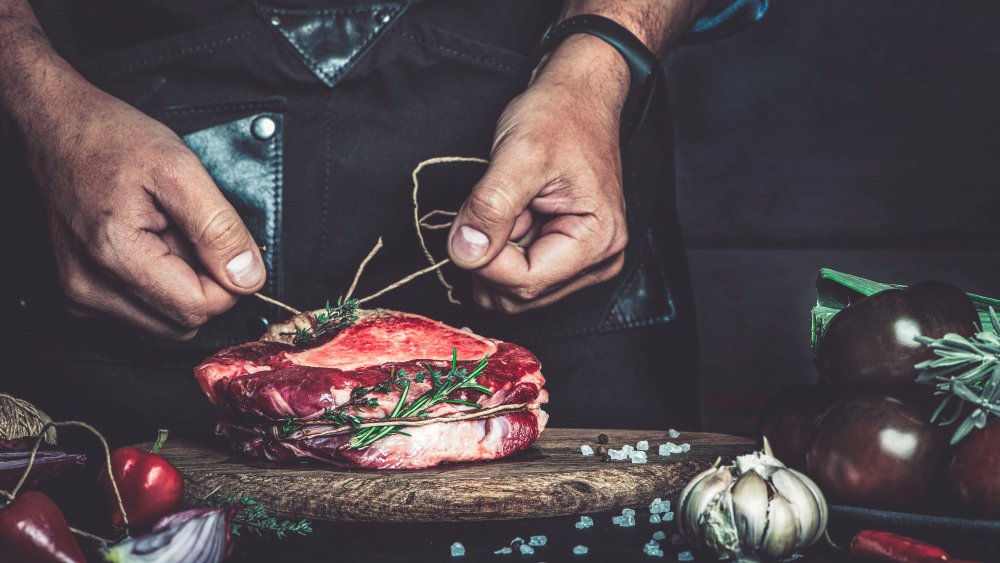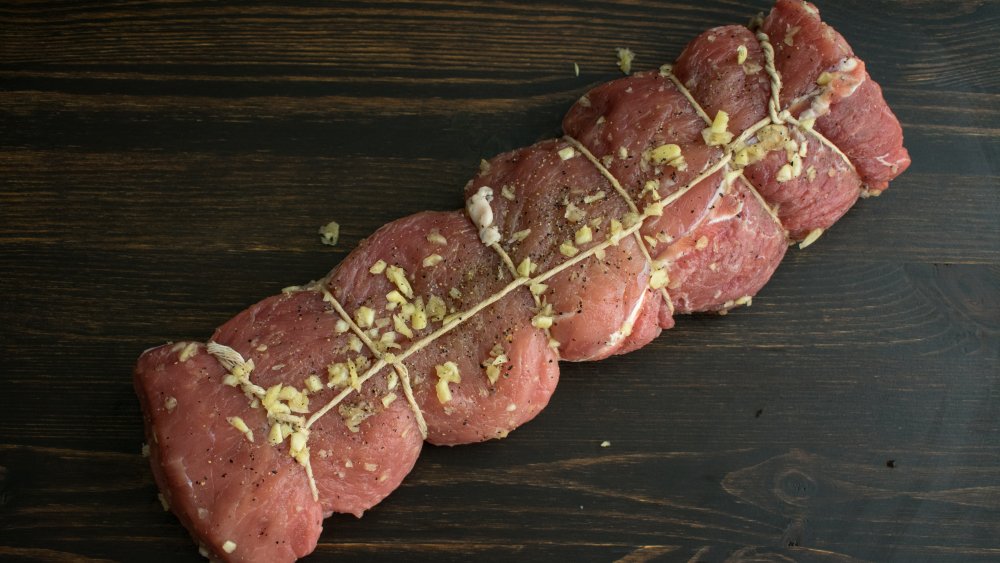The Real Reason You Should Use Butcher's Twine When Cooking Pot Roast
It may seem odd to use a non-edible product like twine when it comes to cooking a pot roast. Sometimes a recipe calls for it, and other times, it's how the cut of meat shows up from the butcher. Cooking it along with your roast as if you were going to eat it may seem counterintuitive to some, and might even lead to its removal.
But there's a good reason to use that little piece of string, and given how infrequently people make pot roasts, home cooks might not know that. It might be worthwhile to look into what role that piece of string plays in creating a perfect pot roast.
First thing's first, that little piece of string has a name, and it's "butcher's twine" (via Taste of Home). It's oven-safe and made out of 100 percent cotton, which should dispel any concerns about heating it to a couple hundred degrees.
Why you should use butcher's twine
Using butcher's twine to truss up a pot roast isn't the only reason the stuff is used in the kitchen — it can also be used to hang up salami and keep herbs together while they're infusing a stock.
The first reason that butcher's twine is handy when it comes to making a pot roast is that it helps the cut of meat keep its form (via Food Republic). Without the twine, the cut would naturally expand and spread out while cooking, turning into a, for lack of a better term, blob. Given the fact that a roast is often a big and pricy cut of meat, it's important for it to look good.
The second reason it's important to keep the roast tied up with twine is that it helps to keep the juices inside the roast rather than allowing them to drip out while the roast is cooking. In other words, keeping your roast tied up will ensure that it doesn't dry up.

